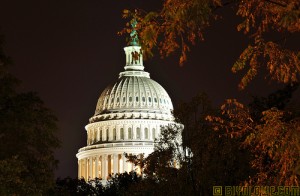Aug 20, 2012
Solar market grows without long-term subsidies

As major utilities attempt to push the solar industry back into the dark ages continue, you will find the most commonly used objection is that solar power cannot compete on cost with traditional sources of energy generation. Solyndra aside, this argument is beginning to lose its legitimacy as the U.S. solar market continues to grow, despite a lack of any serious long-term help on the federal level outside of the 30% investment tax credit.
We shouldn’t forget the numerous federal subsidies that continue to push fossil fuel prices down even while future supplies are in question. Without three decades worth of federal subsidies (not to mention massive tax breaks accrued through oil depletion allowances that date back to the 1920s) coal and natural gas might not be considered the traditional sources of energy generation that we know today.
Infrastructure & subsidies
Initially, the cost of installing a PV or thermal system is more expensive than incumbent sources of generation, such as coal and natural gas. A friendly infrastructure helps keep fossil fuel prices low –we are no longer paying for the capital costs of fossil fuels, simply for the operational and maintenance costs.
Just in 2010, fossil fuel companies received $15.4 billion in subsidies including nearly $5 billion in tax breaks from the U.S. Going on more than four decades of massive fossil fuel subsidies and the debate to extend tax credits for wind generation is in question after less than a decade.
Making economic sense
While Congress expended much hot air on Solyndra, the solar market continued to move forward as prices for modules continued to fall, which in turn grew the demand for solar power. Over the past year, installations increased by 109% while the price of installations dropped by 20% since 2011 and are expected to drop 33% by 2021.
The price tags on PV panels are decreasing as well with increased competition. The price of polysillicon, a key component in photovoltaic panels, decreased by 75%.
As components become cheaper, financing remains an issue. How can customers pay for the upfront capital costs of solar, capital costs that they do not have to cover with grid power?
Enter power purchase agreements (PPAs), one of the most effective ways to provide customers with solar power without the upfront cost. Currently, about twenty states allow PPAs, including states like California and New Jersey with the most robust solar markets. Others are sure to follow suit soon.
And even in today’s uneven policy environment, solar power is reaching grid parity where the state incentives are efficient and the policy is right. With coal prices rising on average, and the economic uncertainties of natural gas due to its externalized costs and history of volatility, solar is a smart and profitable investment.
The sun is not going anywhere and this clean, abundant fuel solves a number of issues fossil fuels cannot. For example, Virginia imports approximately 34% of its energy needs, making it the second-largest user of power from out of state. Increasing Virginia’s solar generation may decrease statewide costs and increase the state’s energy security.
Objections that solar cannot compete on cost are starting to crumble. Residential PV will be sold in the U.S. at under $6/Watt for installations, according to a study by the National Renewable Laboratory (NREL). In Virginia, the study further concluded that residential solar installations in some regions will reach between $3/W – $5/W. Increasing its solar capacity will help Virginia to provide and generate its own electricity.